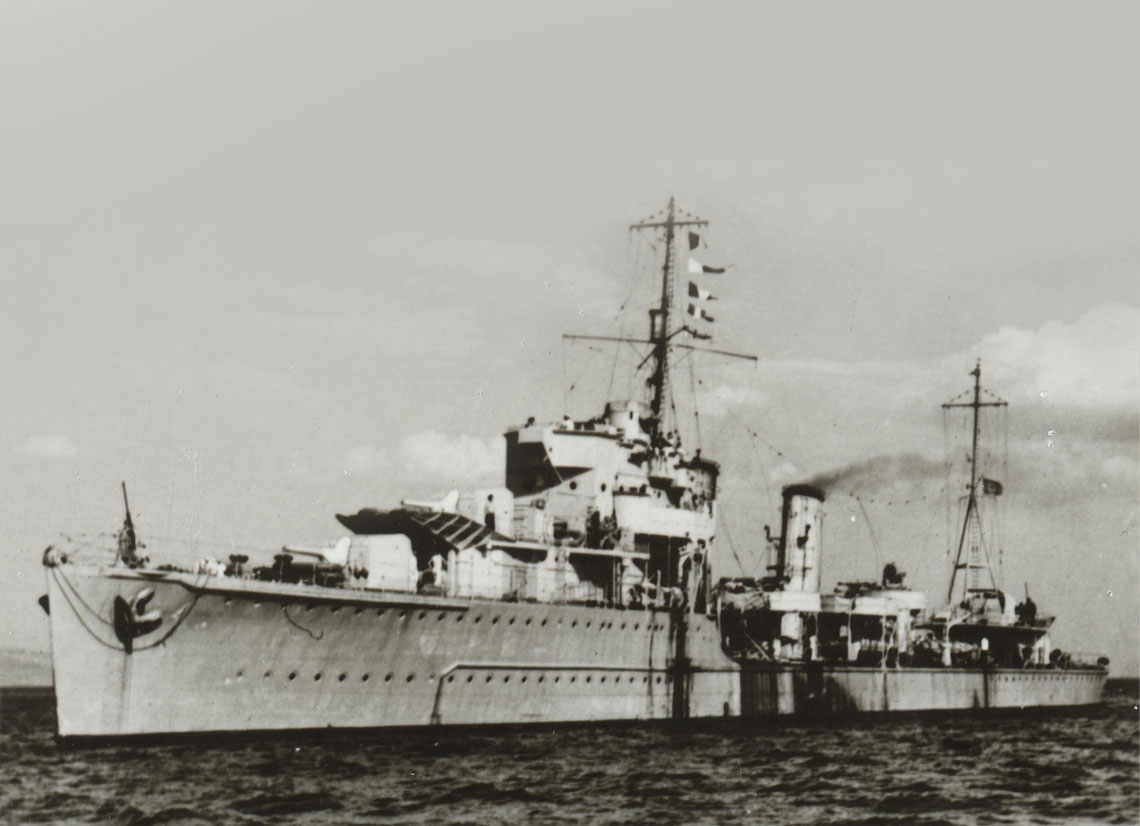RHNS Heraklion (DD-1940)
Back to
Greek Navy page
Greece ordered five destroyers in the mid-1930's from Britain. One 'J' class
leader and four 'I' class destroyers. The four 'I' class destroyers had not been
completed before war broke out and all four were requisitioned by Britain for
the Royal Navy. The four ships fought with the Royal Navy with one being lost in
the Norwegian campaign. Fast forward twelve months and the remaining three are
now part of the Mediterranean Fleet. They get to fight alongside the Kallithea
as part of a flotilla escorting ships to and from Greece and Egypt. With the
Surrender of Greece, the Greek Government requests the three ships be returned
to Greek Service. This request is granted and another 'I' class with the fleet
is added to make up the four ships.

The four ships are crewed by officers and men already in Egypt and their
training on the ships was in the Canal Region and Red Sea, where they learned
convoy escort tactics and how to work as a Flotilla. Kallithea joined the group
for the last week so that the Captain 'D' could imprint himself on his
commanders. The Greek Flotilla is ready to do big things.
| Displacement |
1650 tons std, 2000 tons full load |
| Length |
335 ft |
| Breadth |
35 ft |
| Draught |
11 ft |
| Machinery |
2 shaft steam turbines, 45,000shp |
| Speed |
36 knots |
| Range |
4000 miles at 15 knots |
| Armament |
As received
4 x 4.5" DP (2x2)
12 x 40mm (6x2) |
| Torpedoes |
10 x 21" (2x5) |
| Complement |
150 |
| Notes |
Heraklion |
Below are notes from Wikipaedia on the service of the two 'G' class destroyers
that were built and delivered to Greece in 1938. This is where I get the idea
for my Greek Flotilla from.
Royal Hellenic Navy
Two ships, modified versions of the G class, were built for the
Greek Royal Hellenic Navy (RHNS) by Yarrow in the late 1930s. The ships were
fitted with German-made 127-millimetre (5 in) guns and 37-millimetre (1.5 in) AA
guns. The number of torpedo tubes was reduced by two on these ships to
compensate for the additional topweight. The installation of the armament was
carried out in Greece as the Germans refused to ship the weapons to Britain. Vasilefs
Georgios, named after King George I, served with the RHN during
the Greco-Italian War. Damaged by German aircraft, the ship managed to reach
the Salamis Navy Yard and was put in dry dock for repairs, where after further
damage during German air attacks, she was finally scuttled to prevent capture.
The Germans raised and repaired her and she was commissioned into
the Kriegsmarine as Hermes (ZG3) on 21 March 1942. Hermes was
heavily damaged off Cape Bon, Tunisia, on 30 April 1943 and scuttled on 7 May
1943. Vasilissa Olga, named after Queen Olga, served with the RHN during
the Greco-Italian War. Along with other ships, she escaped to Alexandria in May
1941 and joined the Allied forces. She was lost to German aircraft while
anchored in Lakki Bay, Leros, on 26 September 1943.

Back to Greek Navy page

